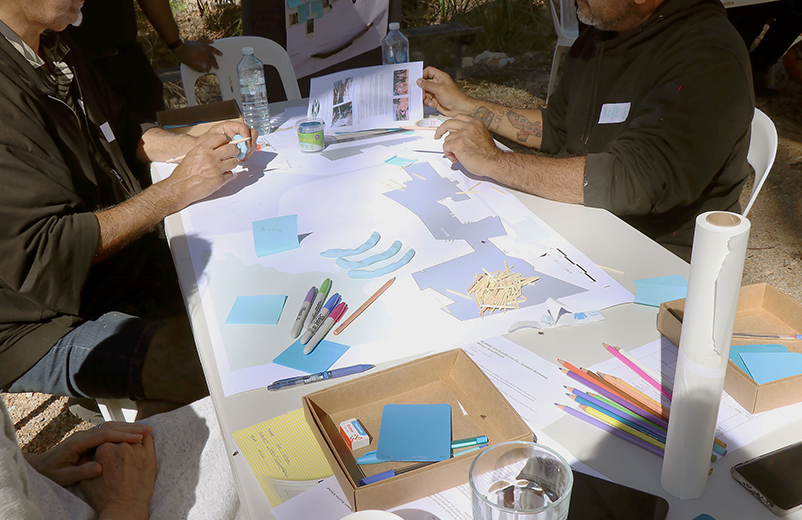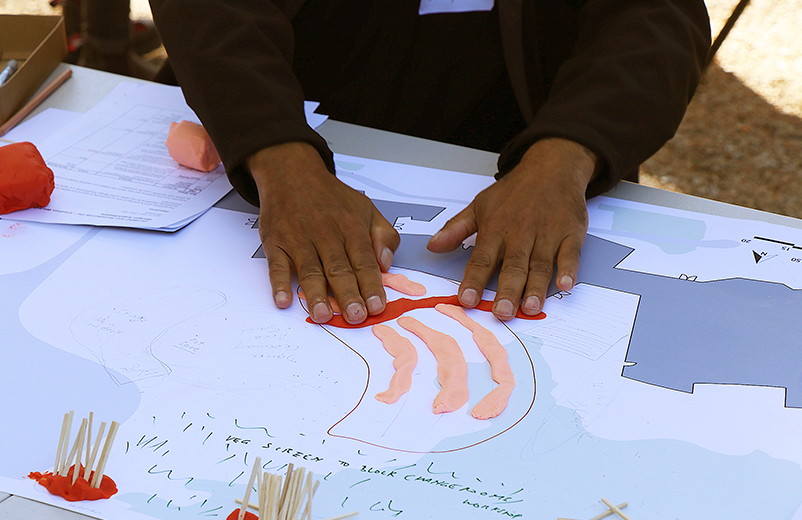Design is often perceived as a purely creative field that has little to offer the emergency management sector. So how can design-led thinking help to develop mechanisms that improve emergency management approaches that value product over process?
The 2021 conference, Gender Justice in Disaster: Inspiring Action included a session on Sociology, Design and Disasters. The session highlighted that while the disciplines of emergency management and design are technically different, their potential to complement and fortify one another is immense. And just as the emergency management sector is rethinking historically patriarchal practices, design and architecture is acknowledging a heightened need for a paradigm shift that values process as much as edifice.
However, how do we develop mechanisms to move away from emergency management approaches that value product over process with the help of design-led thinking, when design itself needs to be rethought? In the conference panel discussion, Jaspreet Kaur, Daniel Miller, Christy Bryar, Jefa Greenaway and Nikhila Madabhushi agreed that the first step undoubtedly starts with deep listening and a deconstruction of the expert-beneficiary relationship.
Jefa Greenaway, a Wailwan/Kamilaroi architect, saw the process of design as being informed by his strong Aboriginal identity and this was a form of empowerment:
When we engage with Indigenous design thinking, we need to start with listening deeply. We will invariably engage with history and memory of place and Country, and ideally we will provide opportunities to skill up and...empower community...to facilitate meaningful agency and voice.1
Through their diverse and overlapping perspectives, the panellists discussed parallels between the emergency management and design disciplines and the linear modus operandi. Both fields have historically left little room for dialogue between the ‘expert’ and the client or the affected population. This is often attributed to inherent output-oriented values of both disciplines rather than a measure of success of a response or intervention being, for instance, positive social impact.2 Furthermore, evidence suggests that a lack of diversity at the frontline and at the drawing board will lead to detrimental social outcomes for local people during the recovery phase.3
In recognition of this, as well as the myriad lessons after the 2009 bushfires, response and recovery approaches by governments after the bushfires in 2020–21 shifted to centre communities as the leaders in their own recovery.4 This leaves many questions unanswered as to how disciplines can adequately assist community-led recovery when many, like design, are inherently untrained to engage in trauma-informed contexts.
Given the complex and fraught nature of (re)construction, how might the role of architects and built environment professionals evolve to better converge with emergency management in a recalibrated common goal to fortify, ‘people, purpose and place’?1


Co-creation workshop for the Wangun Amphitheatre with Gurnaikurnai Traditional Owners in East Gippsland.
Images: Nikhila Madabhushi
Architect Christy Bryar lived through the 2020–21 Australian summer bushfires and she suffered the tragic loss of her home in Gipsy Point in Far East Gippsland. She talked of the critical role of psychosocial recovery before all else:
I think more importantly, social and psychological recovery needs to happen first and I think this is...a space that architects are really well placed to operate in...the architect is not necessarily designing these buildings but actually the process, enabling people to express what it is, their place in the world and what and how they want to live...and we do that all the time in sort of conventional commissions, but can we also do this without an actual (built) outcome...I think we definitely can.5
Jefa Greenaway added:
We tend to have this idea that somehow...the architect or the engineer... is sort of the hero in the story. What we encourage particularly when we engage with Indigenous knowledge systems is that...the architect or the designer needs to park the ego at the door...We're very much reliant upon Indigenous knowledge holders...to be generous in their capacity to share knowledge, and so often we are...the least knowledgeable person in the room. It's not until we go on this journey will we even be able to...consider this notion of placemaking and design [in order to] acknowledge the contribution of Indigenous voice in this journey...Ideally what we seek to do is to move beyond a transactional model to a relational model...This is where we start to build and strengthen relationships [to] create a meaningful legacy over time.1
Christy and Jefa’s perspectives put forward powerful reminders of the delicacy and significance of people’s topophilia around natural and built environments. While architecture and design is often charged with capturing people’s love of place, disaster severely compromises this sensibility. In turn, emergency management operates at the opposite end of the spectrum where solastalgia or deep sorrow of environmental change often dominates people’s experiences.
Given the diametrically opposed yet intrinsically connected purposes of both disciplines, the insights from the panel discussion raised whether there is a role for designers to walk alongside people and their support networks during multifaceted recovery experiences. How might Aboriginal values around place and Country decentre and revise archaic recovery systems? Are there opportunities for architects and designers to actively involve local people through understanding their solastalgic and topophilic sensibilities before, during and after disasters? Could this way of working illuminate the psychosocial links between built and natural environments and trauma after disaster events?
The panellists suggested that design has significant potential to be equitably framed to broaden its scope to better service response and recovery. But how can emergency management shift its own practices to integrate the creative, tactile and non-linear tools offered by design thinking methods? Can an interdisciplinary approach offer affected people the time and space required to heal during the drastic changes to built and natural environments after disaster through to (re)construction? The response to disasters will require innovative practices that challenge the status quo, as the effects of climate change become more visible and the severity of disasters increases. The incorporation of design thinking may be one way we can start to move towards this paradigm shift.


